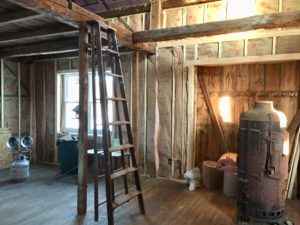 According to sites like houston home remodeling, Renovations can be stressful. The expense, the ever-shifting end-date, and workmen tramping through your personal space for weeks or months on end can all wreak just as much havoc on your sanity as on the space under construction.
According to sites like houston home remodeling, Renovations can be stressful. The expense, the ever-shifting end-date, and workmen tramping through your personal space for weeks or months on end can all wreak just as much havoc on your sanity as on the space under construction.
While the easiest way to live through a renovation is to hire a fabulous designer, home builder, and contractor, head to Florida, and let your team keep you abreast of the project via smart phone (a method several of my clients have embraced), most of us aren’t lucky enough to be able to skip town for such an extended period of time. A good home structure really gives us contentment; try to invest in high-quality waterproofing; this will make your home stronger. Check out my website and learn more about this.
For those of us who must grin, bear, and live through onsite construction, I’ve compiled a few tips and tricks gleaned from years of guiding clients through the process.
The key to getting a renovation off to a good start is to plan, plan, and plan ahead! The first thing I do when beginning a construction project is to sit down with my contractor and a full pot of coffee and create a complete Timeline of the project from start to finish. We not only include when various elements of construction will take place, such as demo and framing out the new space, but when all materials and fixtures will need to be finalized as well. We include the dates in which he’ll need the specifications for fixtures, as well as when materials will need to be on site. Making a schedule is one of the most important things to do before you start on a project as your calvert stated it’s important to do as much research as possible and know what exactly how long a certain projects will take.
In creating this Timeline, you’ll want to make sure that you have ample time to select your flooring, countertops, tiles, and fixtures – and that they can all be shipped and on site in accordance with your contractor’s projected schedule. If you’re working with glass, you can find affordable tools at GGR Glass. If the Timeline demands that all tile be on site in 4 weeks, you need to either accept that you can’t have those mosaic insets with an 8-10 week lead time or think about pushing your construction start date back. Having a contractor waiting for a material or fixture costs both time and money, and it can have a negative domino effect on other parts of the project. A thoroughly thought out Timeline may make you realize you’re not ready to start construction as soon as you thought – something you and your contractor would be better off knowing before a crew tears apart your kitchen. If your renovation involves the plumbing system of your home, you may also need to hire plumbers.
Once you’ve finalized your design and materials, draft a written Design Plan that lists your materials, fixtures, flooring, wall colors, and any other elements the contractor’s team will be installing. If you’ll keep the old wood floors, you may consider a hardwood floor refinishing service to make it look new again.
In addition to providing the Design Plan to the contractor, I recommend leaving a copy of it, along with samples or photos of the materials and fixtures, in a designated folder that anyone working on the space can reference. This allows your craftsmen to verify that the materials delivered to the site are the correct color, size, and material and to see how they ultimately fit into the design as a whole. If the Carrara tile delivered to the site has a lot more gray in it than the sample tile you’ve provided, the tiler can immediately bring this to your attention, rather than leaving you to discover the difference after two walls of your shower have already been installed. This applies to lighting fixtures, cabinet hardware, shower fixtures, and even wall and trim colors. While it’s good to leave the plan in print, nothing beats a photo of the product or actual sample. Help your team catch errors before they’re installed!
Before construction begins, it’s also important to discuss basic logistics with your contractor. Which entrance should everyone use? Where should deliveries be stored? Where should workmen park? Are there any restrictions to when they can access or work in your home date-wise or time-wise? If workmen will have to walk and carry equipment through spaces you’ll be using in order to access the area of renovation, designate a clear pathway for them. Consider rolling up rugs, laying down a drop cloth “path,” and moving any breakables that could be accidentally knocked over by ladders, long pipes, or other tools. Take a look at Badger Ladder’s pump jack scaffold heavy-duty system that is the complete solution for construction sites and remodeling, visit website to learn more.
Taking the time to plan and prepare in these ways before you even begin any construction helps manage everyone’s expectations and will allow you to enter the next phase of renovation with confidence.
Next month, I’ll share tips on the longest part of the process – Living Through It!
Kitty Burruss is an interior designer, wife, and mom of two. In addition to helping her clients plan for and live through renovations, her family survived one of their own this winter.







